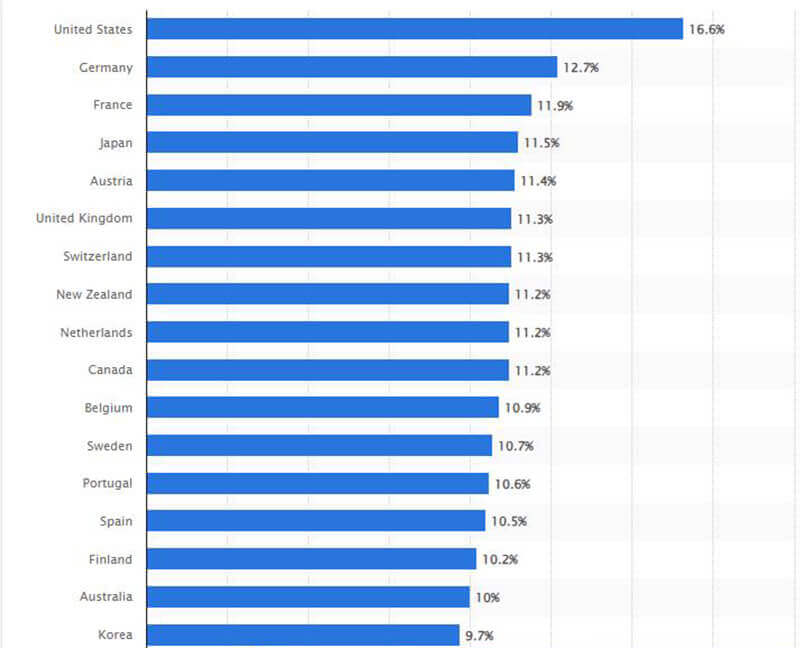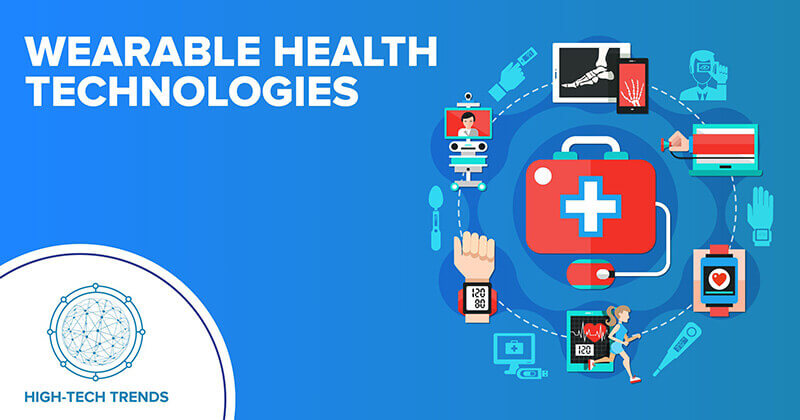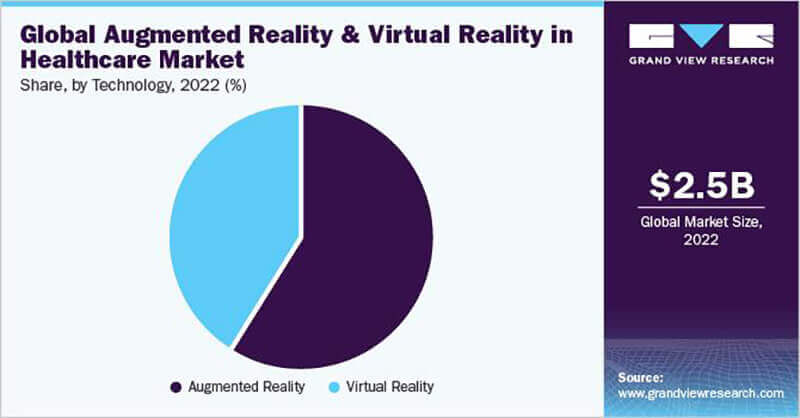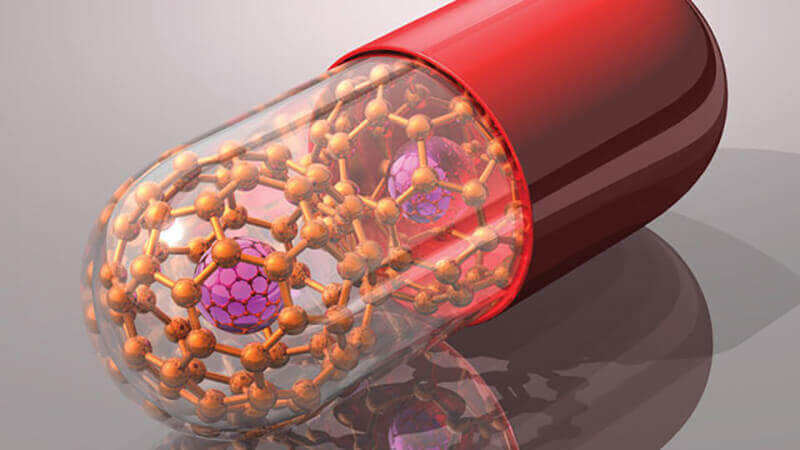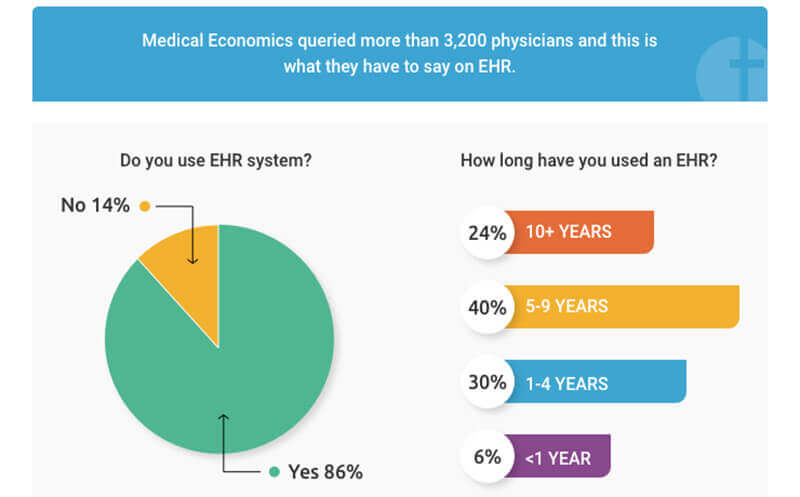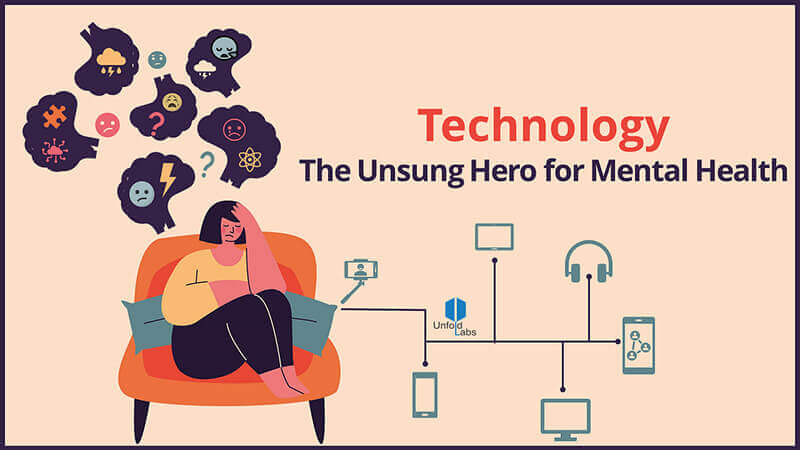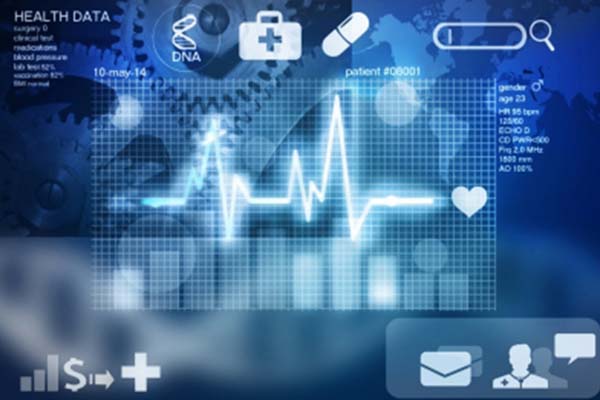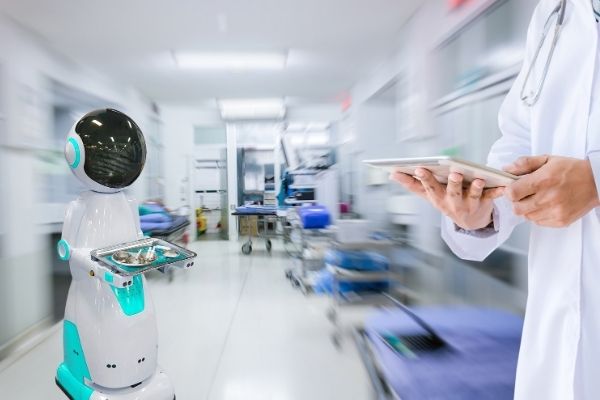The healthcare industry is currently experiencing a profound transformation, primarily driven by the rapid advancements in technology. These innovations are fundamentally changing how healthcare is delivered, accessed, and managed, with a strong focus on improving patient outcomes, enhancing efficiency, and reducing costs.
As a result, the entire patient experience, from registration to discharge procedures, has undergone a significant transformation.It is essential for us to stay updated on these cutting-edge inventions. Rather than technology dictating our actions, we should aim to harness technological advancements to our advantage.The future of medicine hinges on a collaborative partnership between technology and healthcare professionals. This ensures our continued relevance in the field for years to come.
What Is the Present Scale of the Healthcare Sector?
The healthcare industry's scale and trajectory are indeed remarkable, with substantial impacts on economies and societies. One striking aspect of the healthcare sector is its substantial share of the economy. In most developed countries, healthcare consumes more than 10% of the Gross Domestic Product (GDP). This proportion underscores the sector's economic significance and its role as a vital contributor to national economies.
Moreover, the healthcare IT sector, a critical enabler of modern healthcare, is experiencing remarkable growth. Projections indicate an impressive annual growth rate of 14% until 2029.The worldwide healthcare technology market is anticipated to exhibit substantial growth, increasing from $371.46 billion in 2022 to $439.56 billion in 2023, reflecting an impressive compound annual growth rate (CAGR) of 18.3%.This growth reflects the increasing reliance on technology to streamline healthcare processes, enhance patient care, and facilitate data-driven decision-making.
Furthermore, several other pivotal drivers within the healthcare sector underscore the multifaceted forces shaping the healthcare landscape. In 2022, the pharmaceutical industry reached a staggering $1.48 trillion, while medical technology and devices contributed $536.12 billion to the sector. Biotechnology, valued at $1,224.31 billion in 2022, is expected to surpass $3,210.71 billion by 2030. Additionally, telemedicine and digital health are on the rise, growing from $94.44 billion in 2023 to a projected $286.22 billion by 2030. These factors collectively signify a healthcare industry embracing innovation and poised for a future defined by enhanced quality, accessibility, and efficiency in patient care.
The healthcare sector is not merely a passive recipient of change; it is at the forefront of a profound shift that is revolutionizing the industry. This transformation is driven by a convergence of factors, including demographic shifts, the pursuit of innovation, and the central role of technology. As healthcare continues to evolve, it holds the promise of delivering more efficient, accessible, and higher-quality care to populations worldwide.
How are Technologies Revolutionizing the Healthcare Industry?
Technology has undergone a remarkable transformation right before us. It has brought us from the creation of infusion pumps and dialysis machines to breakthroughs in antibiotics, heart valves, and MRI scanners. This ongoing technological advancement is fundamentally reshaping how we approach medical treatments. It automates and enhances tasks once solely carried out by human hands, liberating healthcare professionals to allocate their time and resources more efficiently, possibly leading to reduced healthcare expenses. Furthermore, technology has significantly enhanced our comprehension of intricate medical and physiological issues while also diminishing the barriers to delivering direct patient care. So, without further ado, Let's witness the groundbreaking tools that have made their mark in the realm of healthcare.
Top 12 Healthcare Revolutionary Tools That Changed The Trajectory Of Modern Healthcare
Artificial Intelligence
AI stands out as one of the most captivating technologies, reshaping the healthcare landscape in 2023. Its profound impact is readily apparent in various aspects of healthcare, where it excels in early disease detection and expediting accurate diagnoses. For instance, AI's utilization in breast cancer care has accelerated mammogram reviews by a staggering 30-fold while maintaining a remarkable 99% accuracy rate, effectively minimizing the need for unnecessary biopsies. Additionally, AI extends its influence to the early detection of heart disease, enabling healthcare providers to identify potentially life-threatening issues at earlier, more treatable stages. Furthermore, AI is empowering clinicians to craft comprehensive treatment plans, enabling patients to manage their conditions with increased effectiveness. In 2022, the global market for artificial intelligence in healthcare was estimated to be approximately USD 15.1 billion. However, projections indicate that by the year 2030, this market is poised to exceed an impressive valuation of around USD 187.95 billion.
CRISPR
Clustered Regularly Interspaced Short Palindromic Repeats (CRISPR) stands at the forefront of gene-editing technologies, representing a monumental leap in the ability to manipulate genetic material. Its underlying mechanism draws inspiration from the immune systems of bacterial cells, specifically their defense against invading viruses. CRISPR effectively acts as molecular scissors, precisely snipping out infected DNA strands. This transformative capability has the potential to revolutionize disease treatment paradigms, offering newfound hope in the battle against some of the most formidable health threats, including cancer and HIV.
Furthermore, CRISPR's promise extends to the realm of rare diseases. Take, for instance, cystic fibrosis (CF), a genetically inherited disorder that disrupts the normal functioning of the respiratory and digestive systems. The CF gene introduces mutations that disrupt salt regulation across cell membranes, leading to the thickening of mucus and subsequent complications in the lungs, pancreas, and other vital organs. Given the multitude of cystic fibrosis-causing mutations, ongoing clinical trials are exploring CRISPR's potential to correct these genetic anomalies. Similarly, sickle cell disease, another ailment rooted in a genetic mutation, has traditionally seen bone marrow transplant as the primary treatment option. However, CRISPR gene therapy has emerged as a beacon of hope for patients, offering a promising alternative.
3D Printing
3D printing technology has rapidly risen to prominence as one of the most transformative innovations in recent years. Within the healthcare domain, these cutting-edge printers are catalyzing groundbreaking advancements, such as the fabrication of implants and surgical joints. Notably, 3D-printed prosthetics are gaining immense popularity due to their entirely bespoke nature, enabled by digital precision that allows for a meticulous match to an individual's measurements, down to the millimeter.Another compelling application gaining traction is the use of 3D printing for presurgical planning. The creation of realistic replicas of a patient's unique anatomy empowers surgeons to undertake procedures that were previously deemed too complex or risky.
Taking 3D printing to the next level, bio-printing emerges as a burgeoning frontier in medical technology. While the initial breakthroughs focused on regenerating skin cells for grafts in burn victims, this has paved the way for even more remarkable possibilities. Scientists have achieved the creation of blood vessels, synthetic ovaries, and even functional pancreases through bio-printing. These artificial organs are introduced into the patient's body, where they grow and gradually replace the original malfunctioning ones, opening doors to groundbreaking therapies and potentially life-saving interventions.
Telemedicine
Telehealth and telemedicine have surged in demand since the onset of the Covid-19 pandemic in 2020. Telemedicine specifically pertains to remote clinical services, while telehealth encompasses a broader spectrum of remote non-clinical services. This transformative trend, triggered by the pandemic's disruptions, is poised to continue gaining momentum as more individuals adapt to new lifestyles and work patterns. Projections indicate substantial growth in the global telemedicine market, expected to surge from $68.36 billion to $218.49 billion by 2026.

The advantages of telemedicine extend to both patients and healthcare providers, fostering a paradigm shift in healthcare delivery. Patients experience enhanced convenience, comfort, and potential cost savings, as telemedicine eliminates secondary expenses such as travel costs and childcare. Moreover, it improves access to healthcare for various demographics, including elderly adults, geographically isolated individuals, and those with limited mobility, who can now receive care from the comfort of their homes. Healthcare providers also stand to benefit significantly, as telemedicine reduces overhead expenses, mitigates the risk of exposure to infectious diseases, and enables practitioners to serve a more extensive patient base through flexible scheduling and remote consultations.
Health Wearables
The demand for wearable devices has witnessed a significant surge since their introduction in recent years, particularly following the release of Bluetooth technology in 2000. Today, individuals seamlessly integrate wearables with their smartphones to monitor various aspects of their health, including steps taken, physical fitness levels, heart rate, and sleep patterns. In the context of an aging population prevalent in many developed nations, wearables have emerged as valuable tools for preventing chronic conditions such as diabetes and cardiovascular diseases. These devices empower individuals to proactively track and enhance their fitness and overall health.
Among wearable devices, smartwatches stand out as one of the most popular choices within the healthcare industry. Leading tech giants like Apple, Google, and Samsung have all entered this market, offering a range of features. Depending on the model, smartwatches can record sleep patterns, monitor blood pressure, measure oxygen saturation, and even perform electrocardiograms.In addition to smartwatches, other wearable categories, such as smart clothing, smart rings, and hearables are gaining prominence. These devices not only offer convenience but also serve as valuable data collection tools for clinical research. This evolving landscape of wearables is poised to have a profound impact on healthcare, promoting proactive health management and advancing medical research.
Virtual and Augmented Reality ( VR -AR)
Augmented and virtual reality (AR and VR) have already made significant waves in the gaming industry, but their potential impact extends far beyond entertainment. In the medical field, these technologies hold great promise for enhancing patient care, medical training, and therapeutic interventions.
AR and VR are poised to revolutionize medical training by offering detailed and realistic simulations of medical procedures. Clinicians can practice and refine their skills through numerous iterations before interacting with actual patients. This invaluable training tool enables them to make informed decisions and assess the potential outcomes without subjecting patients to any risks during the learning and experimentation process. Furthermore, the application of virtual reality in treating patients with acute and chronic pain disorders has shown promising results. Immersing patients in interactive virtual environments can serve as a distraction, effectively reducing discomfort and anxiety. These therapeutic approaches are currently undergoing trials at medical facilities, offering a novel way to alleviate suffering and enhance the overall patient experience.
Integrating Data and Predictive Analysis
The integration of AI and advanced technologies has ushered in a new era of data analysis and predictive insights. This transformative synergy empowers medical practitioners with the ability to gain profound insights into their patients' conditions. AI-driven devices, such as sophisticated robots equipped for data integration and predictive analysis, have become invaluable tools in the medical field. They grant healthcare providers unparalleled access to patients' comprehensive medical histories, enabling them to formulate precise diagnoses and make informed decisions regarding treatment strategies.
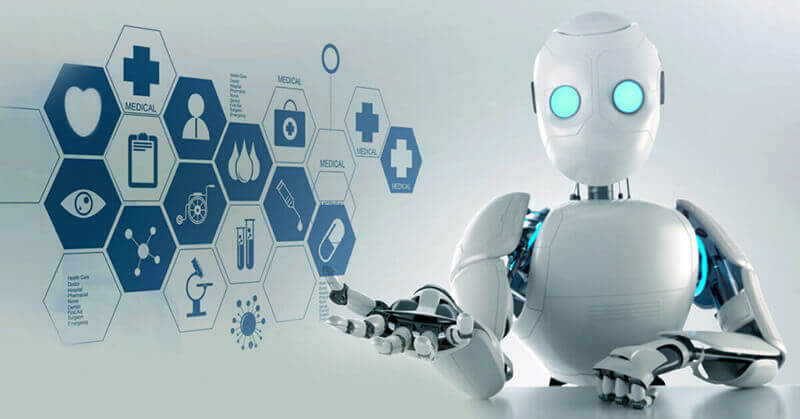
These robots serve as diligent data collectors and adept predictive analyzers, often capable of forecasting patient needs even before healthcare professionals. However, their increasing presence has raised questions about the potential replacement of human roles within the healthcare sector. It's essential to understand that AI's role in healthcare is not to supplant doctors but to complement their expertise. AI assists medical practitioners by providing suggested diagnoses, medication options, and personalized treatment plans based on comprehensive analyses of patients' medical records, historical data, and current symptoms.
This meticulous scrutiny of healthcare data equips healthcare staff with invaluable insights, leading to enhanced patient outcomes, cost-effective care, and increased job satisfaction among healthcare professionals. The future of healthcare is marked by the collaborative synergy between AI and human expertise, ultimately benefiting both patients and the healthcare workforce.
Nanomedicine
Nanomedicine, a burgeoning field in the medical industry, harnesses the potential of nanoparticles, nano-objects, and even nanorobots, all operating at the nanoscale, to revolutionize healthcare.
At its core, nanomedicine offers remarkable promise, particularly in precision drug delivery and cancer treatment. With nanoscale materials, medical professionals can precisely target drug administration, enhancing both effectiveness and minimizing side effects.One notable application is the use of nanopill cameras, enabling in-depth exploration of the body's internal regions, providing invaluable insights for diagnosis and treatment planning. As we look ahead, the role of nanotechnology in medicine is poised for significant expansion.
Projections indicate substantial growth in the nanomedicine industry, with expectations of surpassing a market value of over $125 billion by 2024. This underscores the growing recognition of nanomedicine's potential to reshape healthcare, offering novel solutions and improved patient outcomes.
Electronic Health Records (EHR)
Technological breakthroughs have significantly transformed the landscape of healthcare delivery, with one standout advancement being the widespread adoption of Electronic Health Records (EHRs). These digital records have ushered in a new era of healthcare, equipping medical professionals with comprehensive patient health histories that enable more informed and precise treatment decisions.
The advantages of EHRs are multifaceted. Firstly, they lead to improved quality of care by facilitating instant access to patient records, streamlining healthcare delivery, and enhancing therapeutic efficacy. Moreover, EHRs ensure the accuracy of patient data. Unlike traditional paper records that are susceptible to loss, damage, or unauthorized alterations, electronic files offer robust security measures to protect sensitive medical information.
The advantages of EHRs are multifaceted. Firstly, they lead to improved quality of care by facilitating instant access to patient records, streamlining healthcare delivery, and enhancing therapeutic efficacy. Moreover, EHRs ensure the accuracy of patient data. Unlike traditional paper records that are susceptible to loss, damage, or unauthorized alterations, electronic files offer robust security measures to protect sensitive medical information.
In essence, EHRs represent a pivotal technological advancement that not only improves the quality and accuracy of patient care but also enhances the overall efficiency and security of healthcare practices.
IoT and Medical Devices
The proliferation of medical devices, combined with the integration of the Internet of Things (IoT), brings about a multitude of advantages, ranging from streamlined workflows to enhanced inventory management and improved employee tracking within healthcare settings.
However, this convergence of IoT and medical devices, including critical ones like insulin pumps and pacemakers, as they increasingly intertwine with computer systems and networks, presents substantial security concerns for both patients and healthcare providers.In recent years, the prevalence of IoT and medical devices has become the norm in many healthcare facilities, and this trend shows no signs of slowing down. The sheer number of connected devices continues to rise, amplifying the potential impact on healthcare operations.
Simultaneously, the market for these devices is experiencing remarkable growth. Estimates vary, but projections for the global IoT healthcare market are astonishing, with one report suggesting a staggering valuation of $2,465 billion by 2029. This explosive growth underscores the transformative potential of IoT in healthcare, while emphasizing the urgent need for robust security measures to safeguard both patient data and medical operations.
Mental Health Technology
Did you know that depression is projected to take the forefront as the leading cause of disease burden worldwide? In recent times, a wave of new technologies has emerged to address the ongoing mental health needs of patients, offering novel approaches to diagnosis and treatment.Notably, some applications have the capacity to conduct patient intakes and deliver initial diagnoses even before a patient's initial consultation with a healthcare provider. AI-powered tools are revolutionizing the delivery of mental health treatments, from AI chatbots like Woebot that assist patients in practicing cognitive behavioral therapy (CBT) techniques to smartphone apps and voice recognition software, such as Ellipsis. The latter can analyze a patient's voice and speech patterns to detect potential indicators of emotional distress.
Moreover, digital symptom tracking has proven invaluable for optimizing the efficiency of mental health care in the future. Patients are prompted to share daily data, which is then subjected to analysis by AI algorithms to identify patterns and promptly alert healthcare providers to any warning signs.Another noteworthy addition to the mental health technology landscape is the use of video games. In 2020, the FDA approved EndeavorRx as the first and only video game treatment. This innovative game is designed to enhance the attention span of children aged 8-12 with ADHD and requires a prescription. Clinical studies have reported a notable 73% improvement in participants' ability to pay attention, showcasing the potential of gaming technology as a therapeutic tool in mental health care.
Blockchain in Healthcare
The paramount application of blockchain technology in healthcare revolves around the protection of sensitive patient information, a need that has become increasingly critical. To underscore the significance of this, consider that in the span of just one year, from 2021 to 2022, there were a staggering 692 significant healthcare data breaches reported. In response to this escalating concern, blockchain offers an elegant solution by encrypting patient records in a decentralized fashion, rendering them virtually impervious to tampering or unauthorized access. While the data within the blockchain remains transparent and verifiable, the identities of individuals are shielded behind sophisticated cryptographic codes. This unique blend of transparency and anonymity provides a secure sanctuary for the storage of highly sensitive medical data.
Furthermore, blockchain streamlines the retrieval of patient records. Within a unified ecosystem, healthcare providers can effortlessly access accurate and up-to-date patient data. This not only results in time savings but also plays a pivotal role in enabling well-informed decisions pertaining to diagnoses and the delivery of personalized care. In essence, blockchain not only fortifies the security of healthcare data but also enhances the efficiency and effectiveness of healthcare operations.



